Looking to boost your home’s curb appeal with a relatively simple and affordable project? Hire a professional painter to put a fresh coat on your home’s exterior. Hiring a professional painter will cost between $2,191 and $4,505 for the whole house. The national average cost of a professional paint job is about $3,348.
Of course, how much you spend on materials and labor costs will ultimately depend on how large your house is and several other project specifics. Typical rates range from $1.25 to $4.17 per square foot of paintable surface area, with an average rate of $2.71 per square foot.
How much does house painting cost?
- National average cost: $3,348
- Typical price range: $2,191 – $4,505
- Extreme low end: $829
- Extreme high end: $8,460
For an average-sized home in the U.S., a homeowner would usually pay a pro around $2,191 to $4,505 in total for a whole-house painting project.
If your house is smaller than average and you use particularly cheap paint and primer, your project could cost as little as $829 even with professional labor. On the flip side, painting a large multi-story home with high-quality paint might raise the price to $8,460 or even more.
The base and finish of the paint you use, how many coats it takes to cover your home’s siding, and how much prep work your house needs can all influence how much you pay a painting contractor. The more hours of work and materials a project takes, the higher your cost will be.
Cost Estimator by House Size
Most of the time, painting contractors will charge based on the square footage of the surface area they have to paint.
Note: That’s the square footage of the painting project itself, which isn’t the same as your home’s overall square footage.
To figure out your home’s paintable surface area, first multiply your house’s exterior perimeter by its height. Then, measure the area of all doors, windows, shutters, and other parts of your house not included in the painting project. Subtract those numbers from the overall area of your house, and you’ll have a close estimate of your project’s size.
The paintable area of most homes ranges from 500 square feet on the small end to 4,000 square feet on the large end. You’ll usually pay between $1.25 and $4.17 per square foot for professional painting, or a national average rate of $2.71 per square foot. We used that average to calculate the approximate overall cost to paint homes of several different sizes.
| TOTAL PAINTABLE AREA * square feet | APPROXIMATE TOTAL PROJECT COST |
| 500 | $1,355 |
| 1,000 | $2,710 |
| 1,500 | $4,065 |
| 2,000 | $5,420 |
| 2,500 | $6,775 |
| 3,000 | $8,130 |
| 3,500 | $9,485 |
| 4,000 | $10,840 |
How many stories your home has will affect the cost of the project greatly. Obviously, the taller your house is, the more surface area to paint. Added height will also make the job more work for the professional painters you hire since they likely will have to work from ladders, which will increase your labor costs.
| NUMBER OF STORIES | TYPICAL SIZE RANGE OF PAINTABLE AREA * square Feet | APPROXIMATE TOTALY PROJECT COST |
| Single-story | 500 – 1,500 | $1,355 – $4,065 |
| Two-story | 1,500 – 3,000 | $4,065 – $8,130 |
| Three-story | 3,000 – 4,000 | $8,130 – $10,840 |
Other Factors That Affect Cost
Labor and material costs vary from project to project, so house size isn’t the only thing that affects your overall price. Different kinds of paint will cost more or less per gallon, certain contractors will charge higher hourly rates, and the material of your siding will determine how much paint you have to use.
There are countless factors to consider if you want a truly accurate estimate for your budget. We’ll go over some of the most significant cost factors to help you understand what you’re paying for and how you can potentially save money on your painting project.
Labor cost to paint a house
Even though most contractors will give quotes for the overall project price (including labor and materials), being familiar with average hourly rates can help with budgeting. The hourly cost will usually be per-painter, per-hour, so a home that requires multiple workers will have a severely increased rate.
For example, if the rate is $30 per hour but there are two people working on your project, you would pay $60 per hour. The flip side is that the more painters there are, the faster they will get the job done. Your overall labor cost will usually be about the same no matter how many people the painting company puts on your job.
A typical one- or two-story home will usually take a pro several days (about 70 – 120 work hours) to paint. National average labor rates range from $26 to $79 per hour per painter.
Prep work required
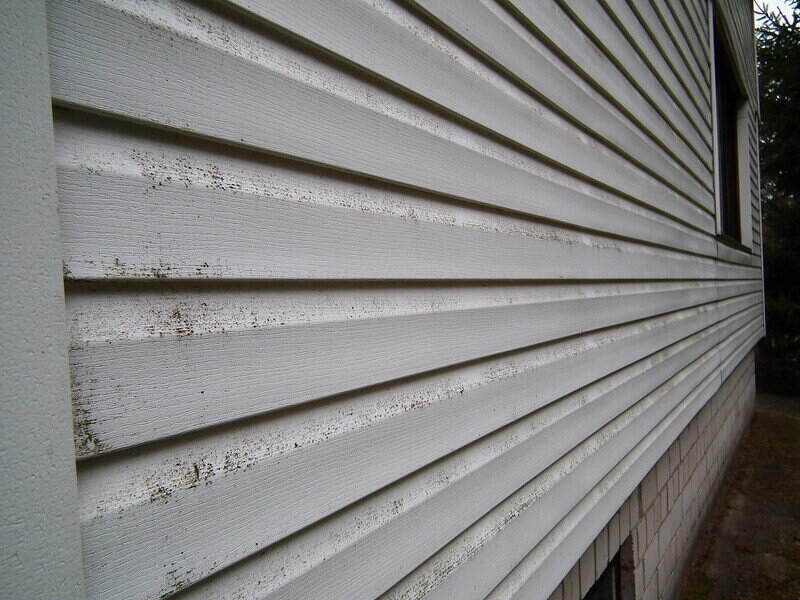
Before the pros can repaint the exterior of your home, they may need to do some additional work to get your house ready. This extra prep work will add time to the job, which in turn will increase your overall cost.
One method of saving money on a painting project is to do the prep work yourself. These tasks are usually minor and should be relatively easy for most homeowners. Common prep work for exterior painting includes:
- Power washing
- Sanding
- Scraping off old paint
- Repairing damaged siding
- Taping off windows, doors, etc.
- Caulking to fill in holes
Siding material
Some siding materials are rougher or more porous than others, so it will take more coats of paint and primer to cover them. The result is a higher material cost and longer work hours.
Brick and stucco are the most expensive types of siding to paint, while metal, wood, and vinyl are the most affordable.
| SIDING MATERIAL | AVERAGE COST TO PAINT |
| Metal siding | $1.59 per square foot |
| Wood siding | $2.00 per square foot |
| Vinyl siding | $2.06 per square foot |
| Concrete siding | $2.17 per square foot |
| Brick | $3.15 per square foot |
| Stucco | $3.33 per square foot |
Type of paint
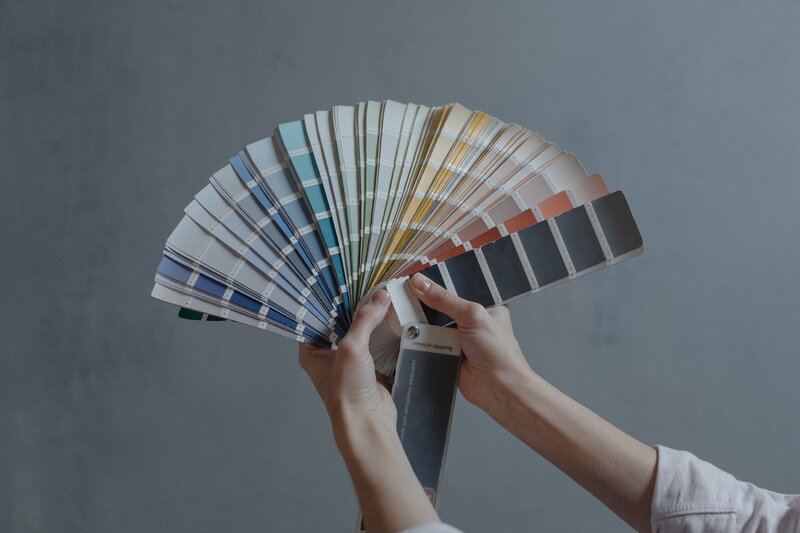
There are two basic types of paint used for home exteriors: latex-based and oil-based. They have similar price ranges, but latex paint can be less expensive than comparable oil paint.
Latex paint, also known as water-based paint, dries faster and is more environmentally friendly than oil-based paint.
Latex is less durable, though, and more prone to scratches and damage from the elements.
Latex paint typically costs $20 to $63 per gallon, depending on the paint color and quality.
Oil-based paint contains more volatile organic compounds (VOCs) than latex, so it’s less “green” and often has a foul (and sometimes even harmful) odor while drying.
Oil-based paints take longer to dry than latex, but they ultimately stand up to scratches and water damage better. For this reason, people often choose to use oil paint in high-moisture areas.
Oil-based paint typically runs from $20 to $70 per gallon.
| TYPE OF PAINT | AVERAGE COST * per gallon |
| Latex-based paint | $20 – $63 |
| Oil-based paint | $20 – $70 |
Paint finish
A paint’s finish essentially describes how shiny it is. High-gloss and semi-gloss paints are the shiniest and most durable against water damage and the like, and they’re usually the most expensive options.
While shinier paints are easier to clean, they also tend to show off a wall’s imperfections more.
Flat paint, aka matte paint, falls on the other end of the spectrum. Matte paint has no shine at all, and it’s difficult to clean without rubbing off the paint because water removes it easily.
Flat paint does, however, cover imperfections better than any other finish of paint, which can be useful for dirty, banged-up exterior walls. Flat/matte paints are typically the most affordable.
| TYPE OF FINISH | AVERAGE COST * per gallon |
| Flat/matte paint | $18 – $45 |
| Eggshell paint | $26 – $53 |
| Satin paint | $26 – $55 |
| Semi-gloss paint | $32 – $63 |
| High-gloss paint | $37 – $70 |
Type of primer
For the best and longest lasting paint job possible, you’ll want to apply a layer of primer before the paint itself. Primer creates a base for the paint, seals pores in the wall, and makes stains easier to mask.
Many products boast a 2-in-1 “paint and primer” label, but that name is misleading. “Paint and primers” don’t actually have any primer in the mix. They’re just thicker paints, and they aren’t anywhere near as effective as a combination of separate paints and primers.
Just as there are different types of paint, there are different types of primer, each with its own price point. Whenever possible, you should use a primer with the same base as your paint (i.e. oil-based primer with oil-based paint or latex-based primer with latex-based paint).
If the wall you’re painting is in good condition and you aren’t trying to cover up stains or a darker color of paint, you might be able to skip the primer altogether. You would save money in the moment, but the paint job would be lower quality and you may have to repaint sooner.
| TYPE OF PRIMER | AVERAGE COST * per gallon |
| Oil-based primer | $20 – $65 |
| Latex-based primer | $20 – $80 |
| Shellac primer | $30 – $62 |
Spraying vs. rolling
Pros and homeowners can apply paint by spraying or rolling it onto the wall. Spraying takes less time and less work, resulting in lower labor costs for you. You can save money, especially on large jobs, by hiring a painting contractor who uses a sprayer.
Spraying is usually better for large homes because you can cover more surface faster.
Rolling, on the other hand, is better for more detailed work. It involves using rollers to manually apply the paint, so it’s more difficult and will take longer. Labor rates for rolling are usually higher than for spraying.
Accessibility of walls
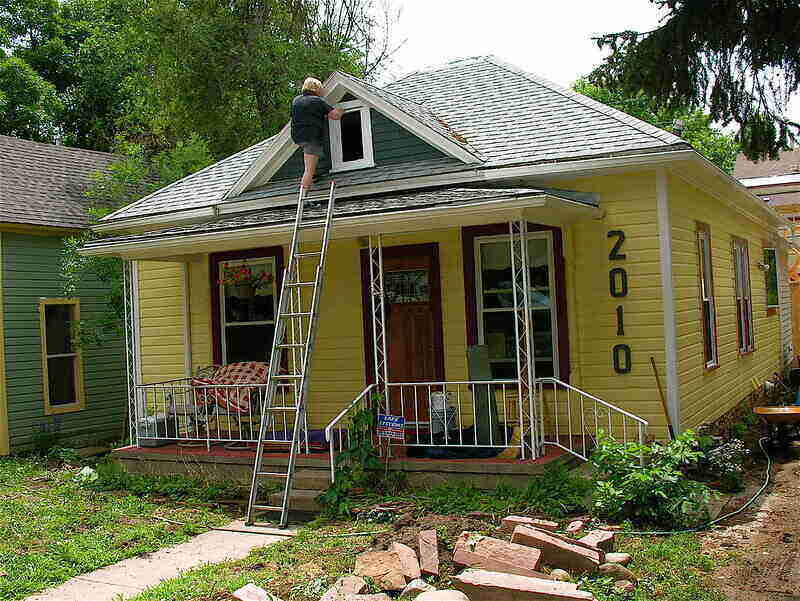
If your walls have spots that are hard to reach, painting will probably end up taking longer, which means you’ll pay more in professional labor costs. Elements that can make parts of your home less accessible include:
- Multiple stories that require a ladder to reach
- Bushes or trees growing close to the home
- Complex trim, windows, doors, etc., to work around
Extra Services
When you hire a professional to paint your exterior walls, you may want to have them paint other parts of the house, too. You could save money by bundling all your painting jobs together instead of hiring a separate contractor for each one.
While prepping your home for painting, you may find bigger issues than just aged paint, such as mold or toxic lead paint. The company you hire to paint might be able to handle problems like these for you, or you may need to find a specialist to remove the harmful substance.
Painting additional exterior features
Curb appeal isn’t all about the walls. Other outdoor features — such as trim, doors, and gutters — need new paint every once in a while, too. Painting these parts of your house along with the siding can give the whole exterior a clean, put-together look.
Because painting more detailed features is different from painting a simple wall, the rates are varied. We have listed below the costs you can expect to pay for painting the most common exterior home features. Add any relevant costs to the cost of painting the walls to estimate the price of painting everything at once.
| FEATURE | COST TO PAINT |
| Soffit and fascia | $1 – $3 per linear foot |
| Gutters and downspouts | $1 – $4 per linear foot |
| Trim | $1 – $6 per linear foot |
| Porches | $2 – $5 per square foot |
| Shutters | $60 – $80 per shutter |
| Doors | $125 – $150 per door |
Interior painting
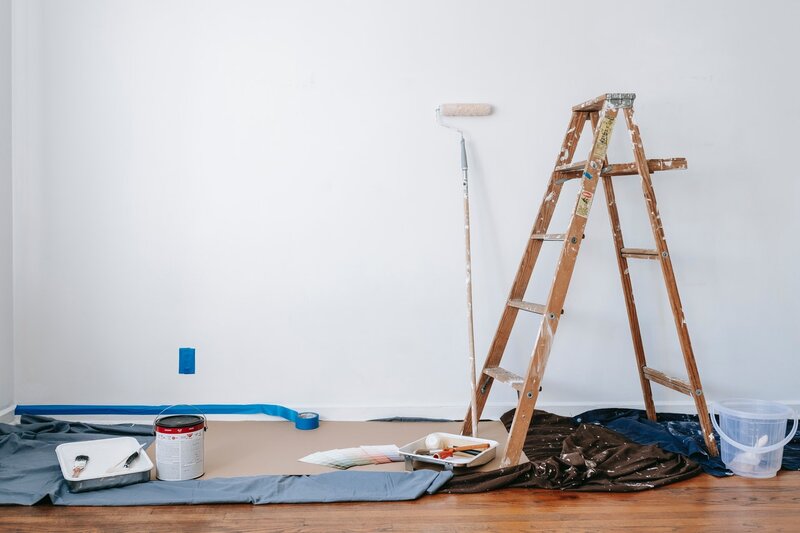
If you already have someone painting the outside of your house, it might be a good time to repaint the inside, too. Remember, you’ll likely pay less for one big inside-outside paint job than two separate ones.
For an average-sized home with two or three bedrooms, you’ll likely pay a professional painter between $1,216 and $3,269 total to paint the interior of your home.
Deck staining
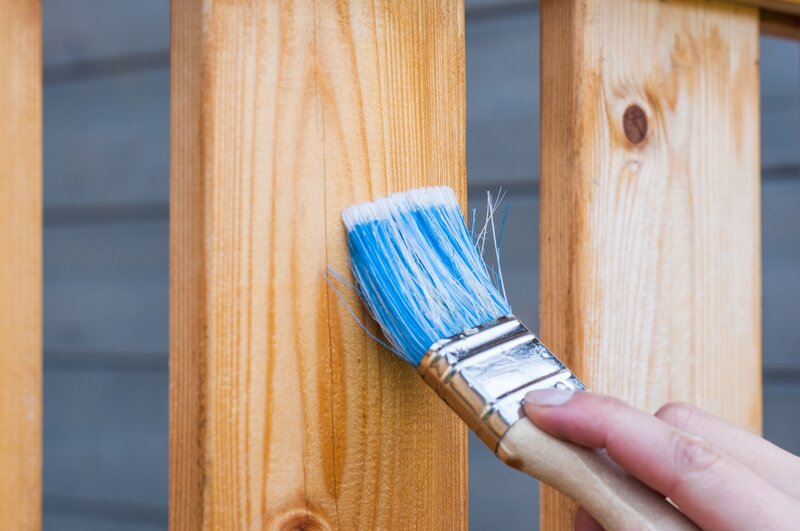
A wooden deck needs staining, both for the aesthetic and to protect the wood from rot, pests, and water damage. You should restain outdoor wood every few years, even more often than most houses need repainting.
Just as you might want to bundle interior and exterior painting, you could add deck staining if you need it, too. Most homeowners nationwide pay $695 to $1,000 to have a contractor stain their deck.
Lead paint inspection
If your home was built before 1978, it’s a good idea to inspect for harmful lead paint, inside and out. In fact, a lead paint inspection is sometimes a requirement for real estate transactions involving pre-1978 homes.
You’ll save time and money if you detect and remove lead paint before painting over it, so you may want to have a lead paint inspection for about $300 on average before hiring someone to paint your walls.
Mold remediation
When painting the exterior of your home, you’ll likely inspect parts of your house you don’t usually pay much attention to. In doing so, you might find an unwanted surprise: mold. Experts agree that if you do find mold, you need to get rid of it immediately, and you need to hire a professional mold remediation company to do it.
How much you spend on mold remediation depends on how far the infestation has spread and whether it has caused significant property damage. You can usually expect to pay between $1,373 and $3,325 for mold remediation, but in severe cases, the bill could run into the tens of thousands. You should also consider having the inside of your home inspected for mold for a cost of $350 to $930.
Cost to Paint a House DIY
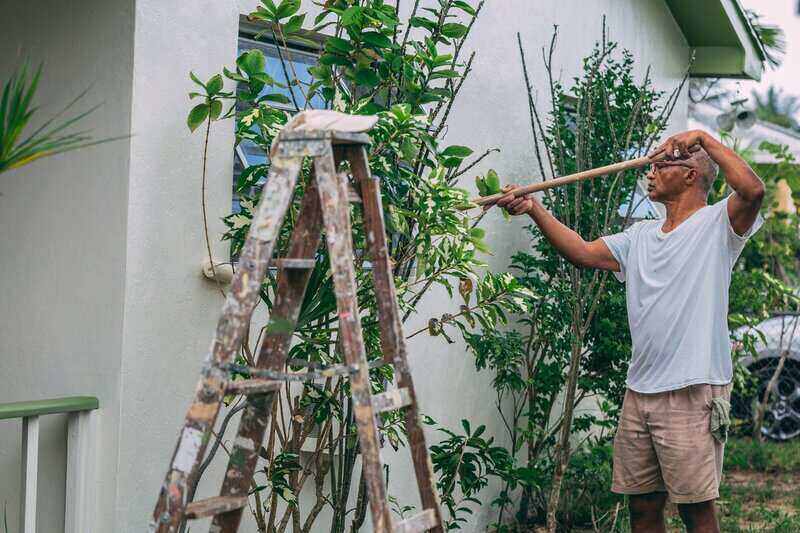
Painting might seem like an easy task — and it well may be, for a pro — but most experts recommend not doing this job yourself. Outdoor painting is more complicated than indoor painting, since siding materials can be difficult to paint on and you have to account for elements like wind and humidity.
Your home’s exterior paint job is the first impression you’ll make on guests and potential buyers, so you want it to be as unblemished as possible. For that reason, hiring a professional painter is your best bet.
Even so, you could still choose to go the DIY route and save yourself thousands of dollars in labor costs. All you’ll need are a few supplies and some cans of paint, all of which you can find at hardware stores or big-box home supply stores like Lowe’s and Home Depot.
Equipment needed
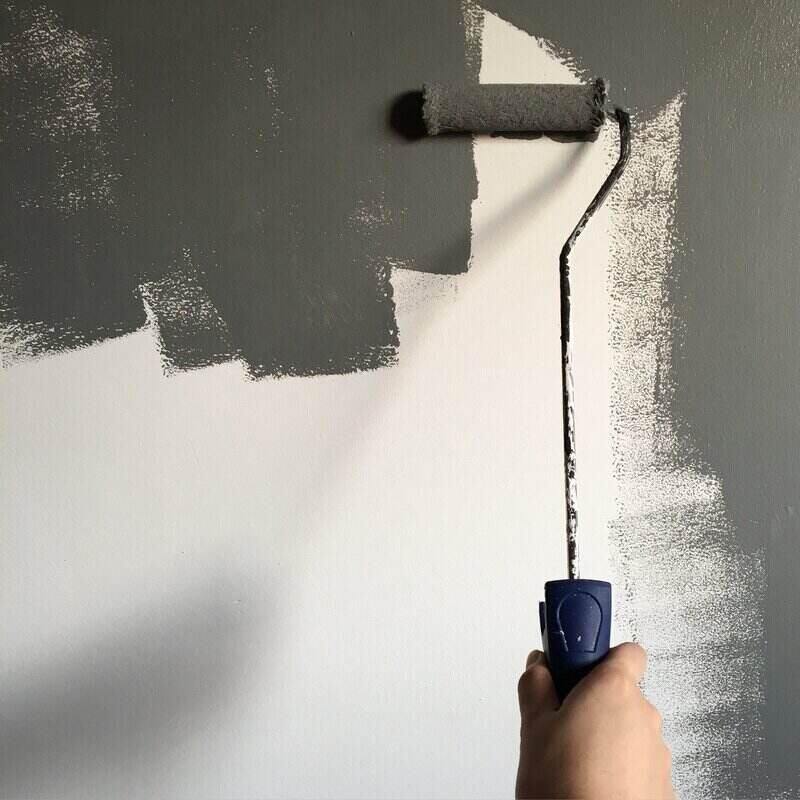
When calculating your DIY painting costs, remember to factor in the materials you need for prep work in addition to the painting itself. That includes things like caulk and sandpaper. You may already own some of the generic equipment you need (such as buckets and a ladder), which would make your equipment costs less.
To help you estimate DIY painting costs, we’ve gathered the average price of each item based on the top 10 featured products on Amazon, Lowe’s, and Home Depot’s websites.
| EQUIPMENT NEEDED | AVERAGE COST |
| Caulk | $6 |
| Sandpaper | $7 |
| Scrapers | $8 |
| Pans | $8 |
| Masking tape | $10 |
| Buckets | $11 |
| Brushes | $14 |
| Drop cloth | $15 |
| Rollers | $15 |
| Ladder | $158 |
| Pressure washer | $224 |
| TOTAL: | $476 |
Cost of materials
As far as materials go, you’ll need paint and primer. How much you need of each depends on the size of your project and the material of your siding. On average, 1 gallon of paint will cover up to 400 square feet, and 1 gallon of primer covers about 250 square feet. Assume you’ll need two coats of paint.
Note: Gallons of paint and primer will cover less space on rough or porous materials such as brick or stucco.
For our purposes of coming up with a price estimate, we assume your home has 2,000 square feet of paintable area and you’re using latex-based paint (which costs an average of $42 per gallon) and latex-based primer (which costs an average of $50 per gallon).
| MATERIAL | HOW MANY GALLONS NEEDED | TOTAL COST OF MATERIALS |
| Latex-based paint | 10 | $420 |
| Latex-based primer | 8 | $400 |
| Total cost of materials: | $820 |
How to prep and paint your home’s exterior in 7 steps
1. Repair damaged siding. Walk around the exterior of your home, inspecting the walls for damage. Fill any holes, cracks, or gaps between siding and trim with caulk and sand it until smooth. You may also need to repair chips in bricks, stone, or concrete.
2. Clean walls. With a pressure washer, spray off dirt, dust, moss, and other debris stuck to your siding. Once the walls dry, scrape or sand off any peeling paint. Clean every surface you plan to paint.
3. Tape off doors, windows, trim, etc. Use masking tape to protect the edges between your siding and any features you don’t want to get paint on, such as trim, doors, windows, and lights.
4. Apply primer. For the cleanest finish possible, apply primer to all surfaces before you start painting. Primer makes it easier for the paint to cover stains and makes the paint job last longer.
5. Paint siding. Apply paint (preferably with an eggshell or satin finish) using a roller for large open spaces and a brush for more detailed work around the trim and other features. Work from top to bottom, and overlap each stroke to ensure you don’t miss any spots. After the first coat dries, you’ll likely have to add a second coat, maybe more depending on the siding material.
6. Paint other exterior features. Remove the masking tape and use a small brush to paint the trim, windows, doors, soffit, fascia, and any other features that need a fresh coat.
7. Clean up. Pick up any drop cloths you laid out before you started working. Rinse the paint out of your brushes and rollers. Clean out the buckets you used to carry your tools and the pans holding the paint.
DIY cost vs. professional cost
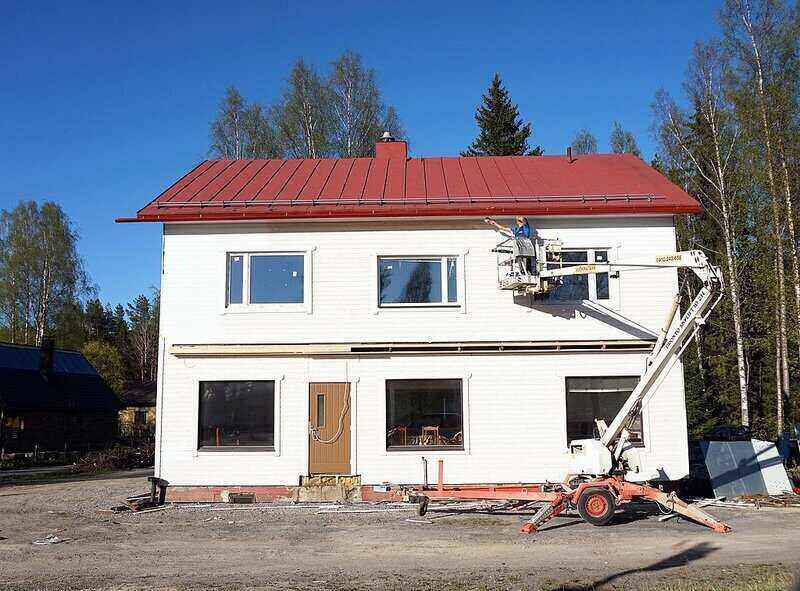
In total, you can expect to spend about $1,296 on the equipment and materials needed to paint the exterior of a home with 2,000 square feet of paintable area. If you use a more expensive paint, like one with a semi-gloss or high-gloss finish, your overall DIY cost will rise significantly. The cost will also increase if you have a larger home.
In comparison, a professional paint job for a house of the same size would cost around $5,420 based on the national average price per square foot. Your savings would be significant, but remember that many experts don’t recommend exterior painting as a DIY project.
You would likely spend several days, maybe more than a week, painting your home, and you likely wouldn’t get as clean a finish as you would if you hired a professional painter.
Cost of House Painting by Location
Paint and primer will likely cost the same no matter where you live, but labor is another story. For one, hourly labor rates will be higher in big cities than small towns. Higher rates obviously make a higher overall cost of professional painting.
What’s more, the weather where you live could make the job take longer. Climate factors like humidity, extreme wind, or high temperatures will usually make painting more difficult. A job that takes longer can raise your labor costs just as much as higher rates can.
FAQ About House Painting
You should paint the outside of your house when temperatures are above 50 degrees. You’ll want to avoid rainy weather and high humidity, so the best times of year in most places are spring or fall.
Satin and eggshell are popular choices for exterior painting because they hide surface imperfections better than higher gloss paints and are more durable and easier to clean than matte.
How often your house needs repainting depends on the type of siding on your home, the climate where you live, how well you prepared for the last paint job, and the paint quality. You’ll know it’s time to repaint when you see signs like peeling or faded paint. Most homes could use a new paint job every 5 to 10 years.
Conclusion
By most accounts, exterior painting is a job best left to the pros. Based on national average prices, you can expect to pay between $2,191 and $4,505 for professional painting for an average-sized house. With labor and material, the rates will be about $1.25 to $4.17 per square foot to be painted.
Even though you might end up with a messier paint job, you still have the option to paint your own house. You could save thousands of dollars compared to hiring a pro, and the larger your home is, the greater your savings will be.
Main Photo Credit: Vlad Chețan / Pexels